Ruth Van Waerebeek
Concha Y Torro Winery, Maipo, Chile
October 8, 2012
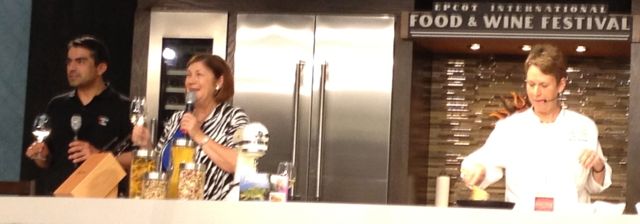
Winemaker from Concha Y Torro, Pam Smith, and Ruth Van Waerebeek
Wine: Concha Y Torro Vineyards (Chile)
Casillero del Diablo Sauvignon Blanc
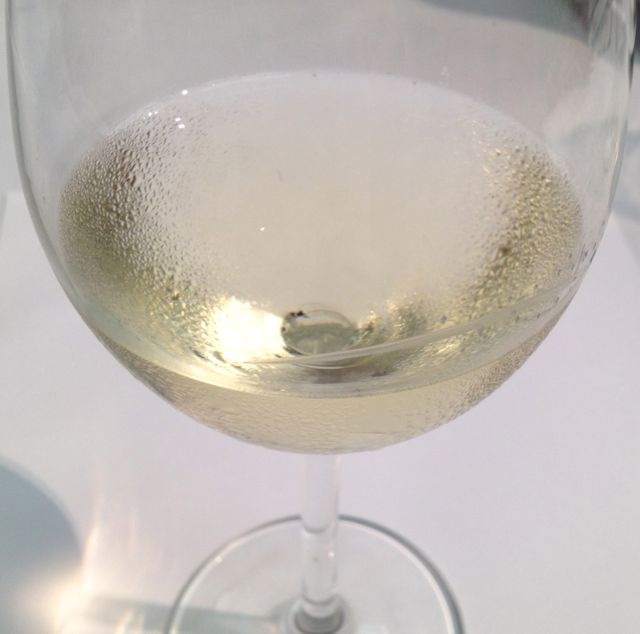
Concho Y Torro, Casillero del Diablo Sauvignon Blanc
- area of production: Casablanca Valley, Chile
- soil: benchland and riverbench associated soils
- grape variety: 100% sauvignon blanc
- production technique: hand and mechanically harvested in March; after fermentation, the wine is aged 3 to 6 months in stainless steel
- characteristics:
- color: straw with green hues
- bouquet: fresh and citric; peaches with hints of gooseberry
- taste: gentle, round and mouthfilling with crisp acidity
- enjoy with cerviche, oysters, and sushi
Chile has been know for her red wines for many years, but the white wines are coming on strong. While white wines from New Zealand have grapefruit notes, white wines from Chile have tropical fruit and citrus (isn’t grapefruit citrus?!). Chilean whites also have good acidity and minerality.
Concha Y Torro was founded in 1883. This wine got it’s name from a tale about the founder of the winery. He was unhappy because wines kept disappearing from his cellar, so he spread a rumor that the devil was in the cellar… “Casillero del Diablo” (Devil’s Cellar).
With white wines, older isn’t necessarily better because you want fresh, crisp acidity… for example, right now we should be drinking whites from 2010, 2011, or even 2012. If you have an oaky white wine, you can drink it when it’s a little older than one or two years.
Menu
Chilean-Style Baked Scallops on a Bed of Crispy Vegetables and Parmesan Butter
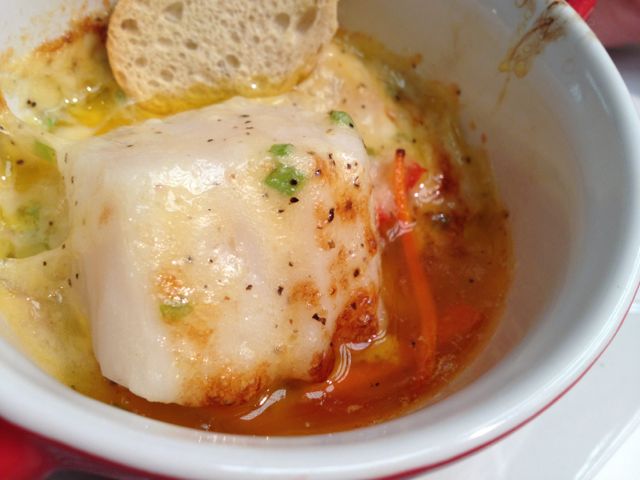
Chilean-Style Baked Scallps
Ruth Van Waerebeek is a winery chef, therefore the wine comes first in menu preparation or recipe development. Red wines are always better with food, but white wines should be good without food. In her homeland, Belgium, if a food is too salty or too sweet or too sour or too spicy then you drink beer with it, not wine.
Recipe: Serves 4
- compound butter
- 1 stick plus 2 tbs sweet butter (unsalted), at room temperature
- 1 cup grated Gouda cheese
- 1/2 cup grated Parmesan cheese
- 1/3 cup dry Vermouth or dry white wine
- 1 tbs chives, minced
- 1/4 tsp mixture of coarsely ground black and white pepper
- salt, to taste
- vegetable garnish
- 1 leek, white part only, very fine jullienne
- 1 carrot, fine julienne
- 1/2 red bell pepper, fine julienne
- salt and pepper to taste
- 16 fresh or frozen scallops (in the shell, if possible)
- minced chives and lime wedges for garnish
- to prepare compound butter/parmesan butter: place 1 stick of butter, cheeses, Vermouth, chives, white & black pepper, and salt in a mixing bowl and combine with a fork
- transfer the butter to a square of aluminum foil, fold over, and make a roll; refrigerate (Chef used plastic wrap instead of aluminum foil)
- to prepare the vegetables: melt the remaining 2 tbs of butter in a small skillet over medium heat; add the vegetable julienne and sauté, stirring for 4-5 minutes or until lightly browned; season with salt and pepper to taste; reserve
- at serving, preheat the broiler; divide the vegetables in 16 reserved scallop shells or in 16 individual small baking dishes and place a scallop on top
- cut the chilled compound butter in thin slices and top each scallop with a piece of the butter; broil until bubbly and hot
- sprinkle with chives and serve at once with lime wedges
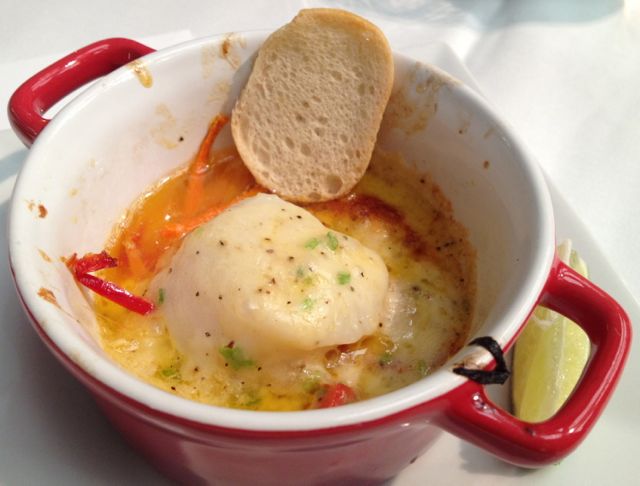
The cheese could have been a little browner for more flavor
Notes:
- the limes added to make a better pairing with the Sauvignon Blanc; if pairing with Chardonnay, skip the limes, the oaky-ness and butteriness of that wine doesn’t need the acidity of the limes
- the compound butter – make extra and put on top of any seafood/fish; keeps in the freezer for about 3 weeks
- cooking under the broiler – butter melts, scallop is cooked, cheese forms a crust
- can “build” the dish ahead of time (make sure the vegetables are cold so that the scallop isn’t cooked from the heat of the vegetables), enjoy your guests arrival, and then broil it before serving
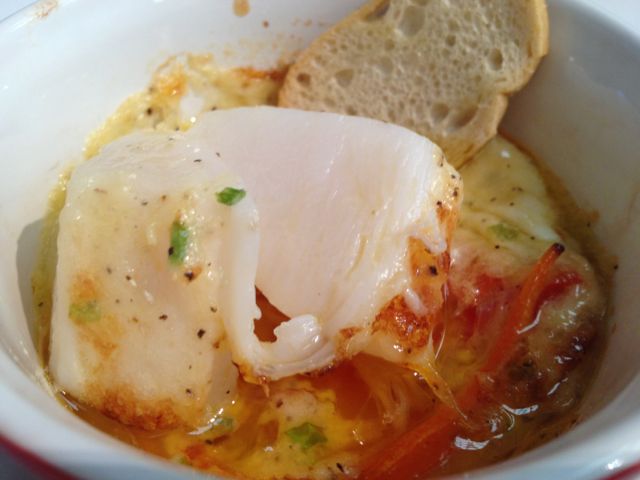
A peek at the scallop cut in half, it’s cooked through
Tasting Notes:
- nick’s scallop was gritty, nora’s wasn’t – tender, not overcooked
- the compound butter was good
- the lime helped the pairing of the food and wine
You must be logged in to post a comment.